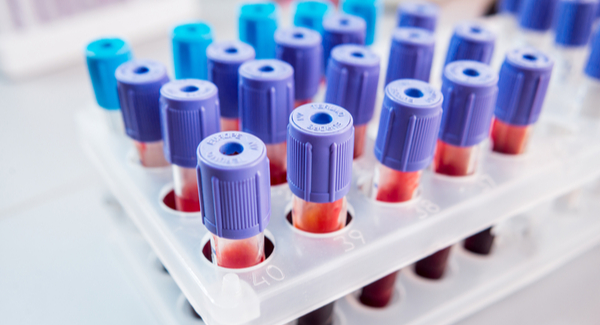Tests to Diagnose and Track Psoriatic Arthritis
Exams, along with blood and imaging tests, help your doctor diagnose PsA and monitor your response to treatment.
By Stephanie Watson | June 17, 2022
The early warning signs of psoriatic arthritis (PsA) can be subtle and hard to spot. You’re a little more tired than usual. Your joints feel stiff and achy. You’ve got a few unusual patches of scaly skin.
This is where your primary care doctor or rheumatologist comes in. Your doctor will ask some questions, examine you and order a few tests to figure out whether your symptoms are due to PsA, another type of arthritis or something else entirely.
The Exam
No single test can diagnose or rule out PsA, but a combination of exams and tests can help your doctor figure out whether you have this type of arthritis or a different condition.
The diagnostic process starts with a medical history. Expect your doctor to ask questions like
- What symptoms do you have?
- When did they start?
- Does anyone in your family have PsA or another autoimmune disease?
- What other health conditions do you have?
The more details you can provide, the easier it will be for your doctor to make the diagnosis.
During a physical exam to diagnose PsA, your doctor might
- Look for signs of swelling or tenderness in your joints
- Check your fingers and toes for swelling
- Examine your fingernails for pitting, ridges, separation from the nail bed or other damage
- Look for signs of psoriasis (scaly patches) on your scalp and other areas of your skin
Blood Tests
These tests help your doctor rule out other diseases that have similar symptoms, such as rheumatoid arthritis (RA).
Erythrocyte Sedimentation Rate (ESR) and C-Reactive Protein (CRP)
PsA is an inflammatory disease. Both ESR and CRP tests detect inflammation in your body. The ESR measures how quickly red blood cells called erythrocytes fall to the bottom of a tube. A higher sedimentation (sed) rate is a sign of inflammation.
C-reactive protein (CRP) is a substance that your liver releases when there is inflammation in your body. High levels of CRP can be a sign of autoimmune diseases like RA, lupus and PsA. A normal ESR and CRP result can’t rule out a PsA diagnosis, because about 60% of people with this condition don’t have elevated levels of these inflammatory markers. But these tests can help confirm that you have an autoimmune disease.
Rheumatoid Factor (RF) and Anti-Cyclic Citrullinated Peptide (anti-CCP) Antibodies
Rheumatoid factor (RF) and cyclic citrullinated peptide are proteins your immune system produces that attack healthy tissues. Another name for them is autoantibodies. They are typically found in the blood of people with RA, but not, as a rule, in those with PsA. Your doctor can use these tests to rule out a diagnosis of RA.
Human Leukocyte Antigen B27
HLA-B27 is a protein found on the surface of white blood cells. It helps your immune system tell the difference between your own cells and harmful invaders. An abnormal result could mean that you have an autoimmune disease like PsA, ankylosing spondylitis or inflammatory bowel disease.
Imaging Tests
These tests let your doctor see your joints and look for signs of damage from PsA. Imaging tests are also useful once you’ve started treatment to show whether the medication you’re taking is helping to slow joint damage.
X-ray
This test uses a small amount of radiation to create images of your joints and other structures inside your body. Your doctor might take X-ray images of your fingers and toes. X-rays usually don’t help in the early stages of PsA. In the later stages, they can show joint changes that are common to PsA but not to other types of arthritis. These changes may include
- Wearing away and damage to the joint
- Narrowing of the space in the joint, indicating the loss of cartilage
- A “pencil-in-a-cup” sign, where the end of the bone is worn away to a sharp tip that looks like a pencil inside a cup
Computed Tomography (CT) Scan
This test takes a series of X-rays from various angles and combines them into one highly detailed, cross-sectional image. A CT scan can show areas where arthritis has worn the bone away.
Ultrasound
This imaging technique uses sound waves instead of radiation to produce images from inside your body. It’s more sensitive than X-rays at detecting early joint inflammation and damage.
Magnetic Resonance Imaging (MRI)
This technique uses a magnetic field and radio waves to create an image of your organs and tissues. It is a highly sensitive test that can show signs of inflammation in your joints.
Skin Biopsy
Doctors usually can diagnose the psoriasis associated with PsA just by looking at their patients’ skin. A biopsy may be helpful for ruling out eczema or other skin conditions. For this test, your doctor removes a small piece of your skin using a punch device. The sample goes to a lab, where a technician checks it under a microscope for psoriasis and other skin disorders.
Monitoring Your Progress
Once you have a correct diagnosis and begin treatment, your doctor will monitor you about four times a year to make sure your disease isn’t getting worse. During these visits, expect to have a skin and joint exam and possibly blood and imaging tests. If you have a lot of symptoms or if tests show your PsA is getting worse, your doctor might adjust your medication or dosage.
Stay in the Know. Live in the Yes.
Get involved with the arthritis community. Tell us a little about yourself and, based on your interests, you’ll receive emails packed with the latest information and resources to live your best life and connect with others.



